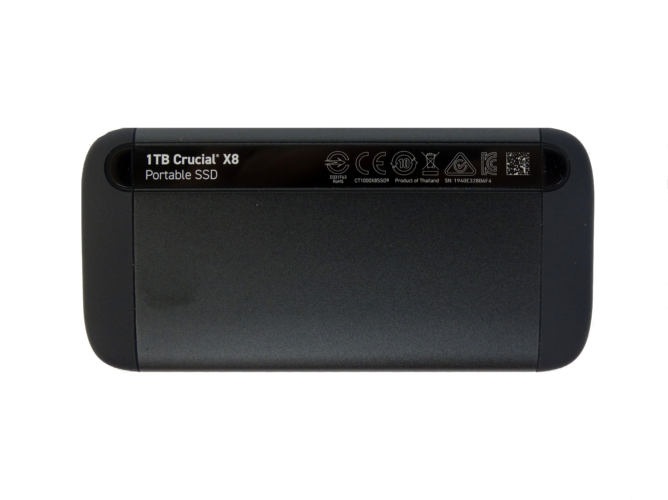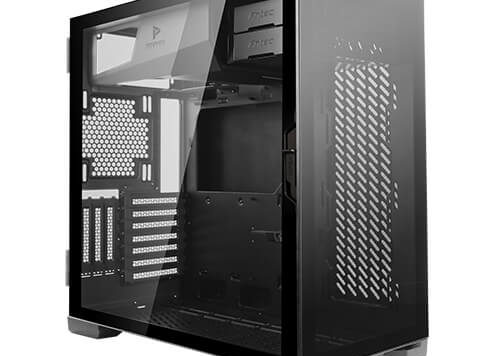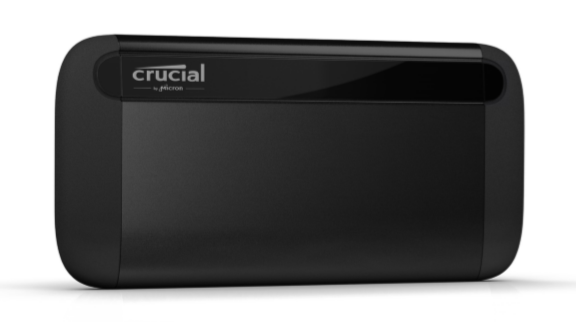Introduction
Crucial’s parent company Micron is not new to portable storage. Until two years ago, Lexar was under the Micron corporate umbrella and one of the highest recognized brands in portable storage.
The Crucial X8 is this division’s first portable storage product. The X8 came from the same team that brought you the MX500, one of the best SATA SSDs shipping today, and the P1 NVMe SSD.
The new X8 Portable SSD is much closer to the P1 than the MX500. Under the aluminum unibody chassis is a purpose-built NVMe drive with 4-bit per cell memory Micron flash and a custom firmware designed to gobble incoming data at single-level cell (SLC) speeds.
Staying true to form, Crucial designed the X8 to be the first consumer friendly, mainstream, yet high-performance portable storage device. The X8 isn’t the first NVMe-based portable SSD, but it is the first from a large mainstream company to utilize the USB bus and feature consumer-friendly pricing.
Specifications
| Crucial X8 500GB | Crucial X8 1TB | |
| Pricing | $119.95 | $164.95 |
| Capacity (Raw / User) | 512GB / 500GB | 1,024GB / 1,000GB |
| Device Interface | USB Type-C | USB Type-C |
| Protocol | USB 3.1 Gen 2 | USB 3.1 Gen 2 |
| Sequential Read | 1,050 MB/s | 1,050 MB/s |
| Warranty | 3-Years | 3-Years |
Crucial doesn’t list too many performance details for this series. The official product page doesn’t show the memory technology, write performance or any random data performance. The use of 4-bit per cell (QLC) memory may scare off performance enthusiasts that understand tech lingo without feeling like I’m talking in a foreign language.
The use of advanced manufacturing technology, materials, and data storage methods shouldn’t worry anyone in this case. The X8 delivers strong performance in both reads (published at 1,050 MB/s) and writes (unpublished but nearly 1,000 MB/s). To reach the high speeds, Crucial utilized the USB 3.1 Gen 2 protocol that is backwards compatible with all existing USB ports. The drive uses the impressive Type-C interface that is more robust than older MicroType-B connectors. On the other end of the cable, we found a Type-C with an adapter to Type-A for compatibility. The combination supports everything from legacy PCs to the newest smartphones, and everything in between.
The series comes to market in two capacities, 500GB and 1TB. After speaking extensively with company officials last week, we foresee a 2TB model coming to market in 2020.
Crucial doesn’t advertise the new X8 Portable SSD as a “rugged” design per se like the LaCie Rugged series and some other products with rubber bumpers or more extreme protection methods. In our meeting last week, the company stated the X8 can survive a fall from 7.5 feet on carpet. When pressed, we learned the early failure part for impacts is the plastic end caps and not the actual data storage portion of the product. Sadly, Crucial would not let us test the drives on hand from the parking garage on campus. Damn lawyers!
Pricing, Warranty, and Endurance
Crucial did a really good job on pricing the X8 right out of the gate. The 500GB model currently sells for $119.95 on Amazon, the list price, and the 1TB sells for $164.95. The 1TB model carries a $189.99 list price but that didn’t hold for long.
The X8 Portable SSD models carry a full 3-year warranty from Crucial. Users are not limited by write endurance for the series. The warranty is a simple, yet solid, three years regardless of the amount of data written to the memory.
A Closer Look
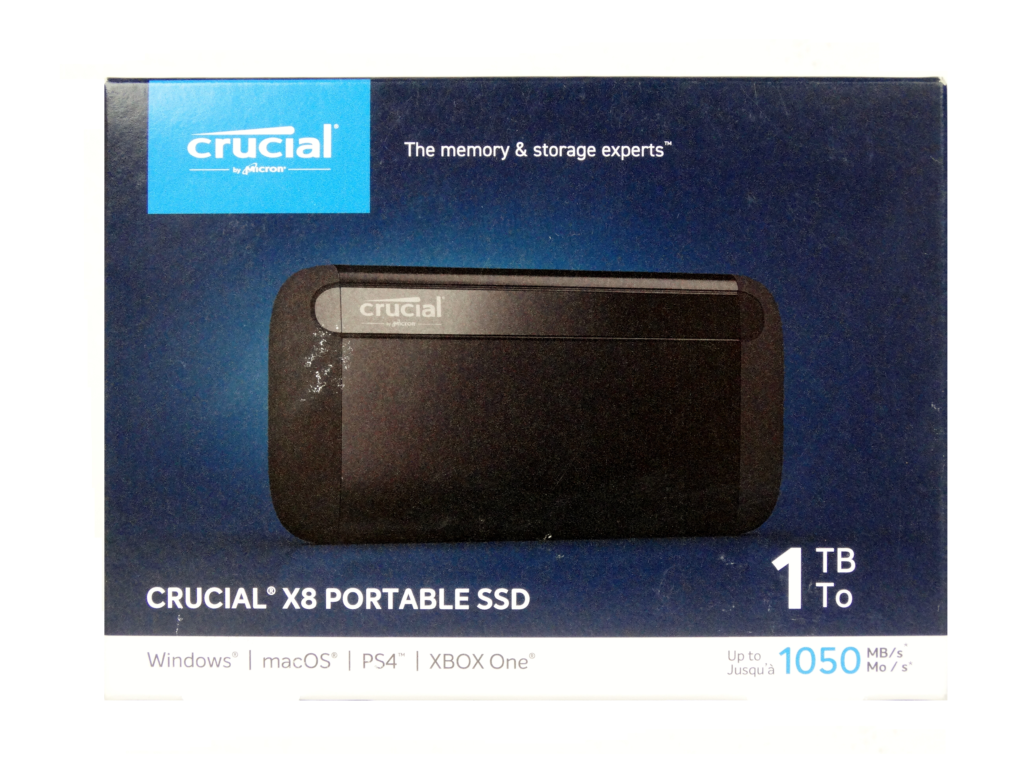
X8 packaging is similar to Crucial’s internal SSDs. When I first picked up the package, I thought it was the wrong box. It’s about the same depth as a 2.5-inch SSD package. The slim package lets you know the product inside is also quite thin even though you expect the drive to be larger from the picture on the package.
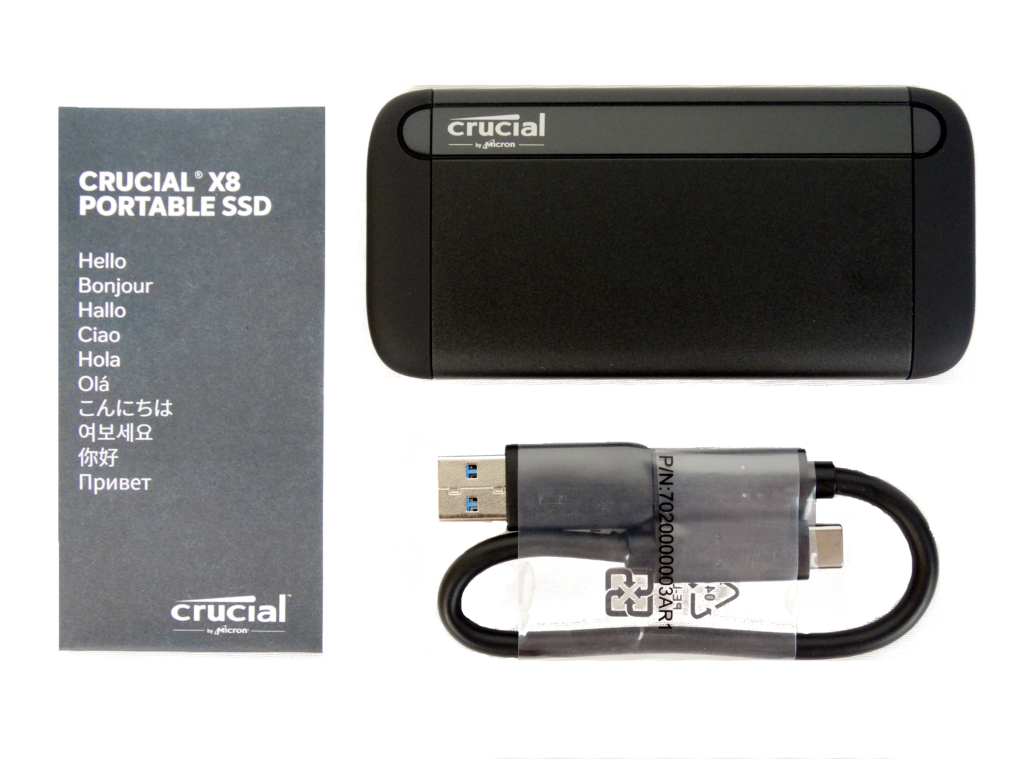
Inside we found the X8 Portable SSD, a paper welcome manual and a cable.
The cable isn’t overly short, but it is on the smaller side. It’s a dual Type-C cable with a well-fitted Type-A adapter on one end. The adapter is so well built I didn’t know the cable was Type-C on both sides the first few times I used the drive. The adapter comes off with a nice tug and is one of the better designs we’ve tested.
The drive is not much thicker than a 7mm SSD, but it is long. The proportions remind me of a football like the Samsung X5 Portable SSD, another NVMe-based portable SSD.
As mentioned, the case is made from a solid piece of aluminum with plastic caps on each end. In use, the case doesn’t get overly hot like nearly every other NVMe-based portable SSD we’ve tested.
